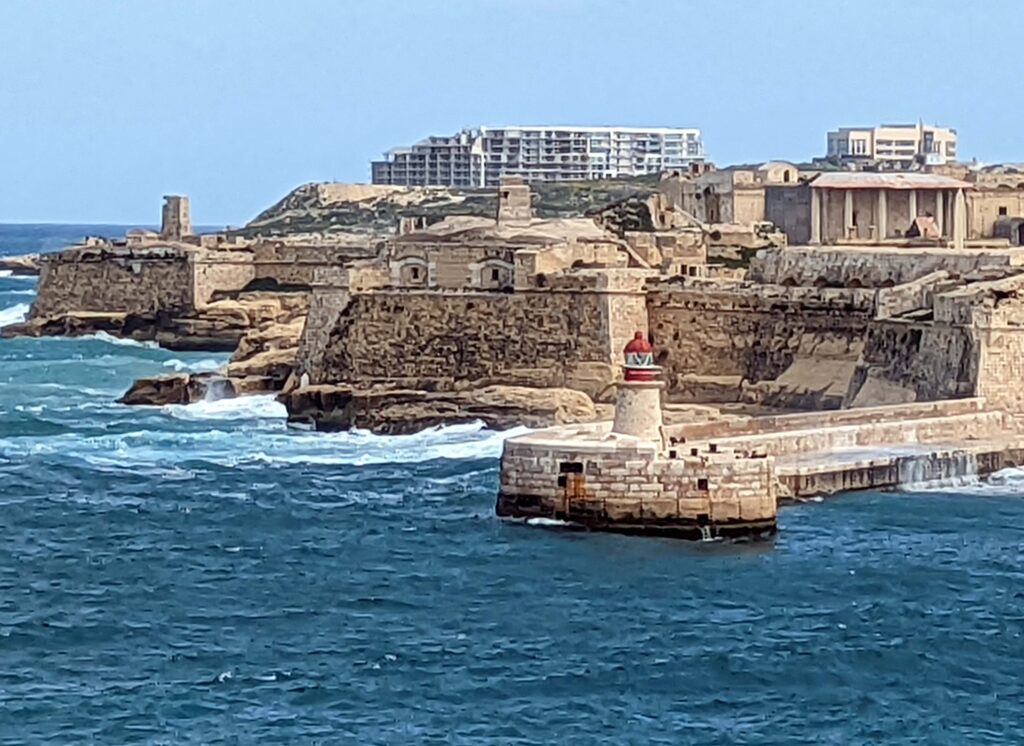
My watercolor kit is safely stowed in my backpack, but the idea that our Grand Master would allow me time to paint is a chivalric fantasy. I’m up at 6, out at 8, perambulating until 7, and safely stowed away in my monastic cell at 10.
To be fair, my friend Kenny is far more easy-going than the Grand Masters of the old Order of Knights of the Hospital of Saint John of Jerusalem (Knights Hospitaller), whose footsteps we are following on these ancient dusty hillsides. About the only preparation for this trip that I did was to read about the history of the Knights Hospitaller before the great Siege of Malta in 1565, in which they maintained a truly heroic defense against overwhelming forces.
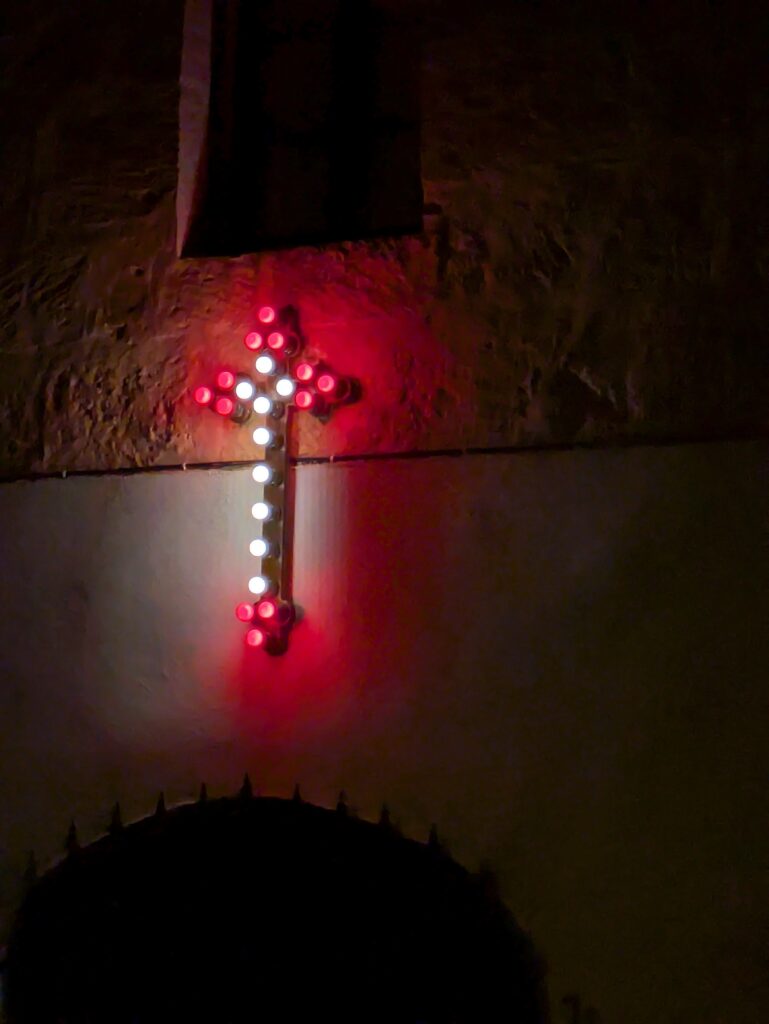
The shadows of the Knights Hospitaller are visible in Valletta and the ring of defensive towers that surround the islands. The Knights may have been the most colorful part of Malta’s history, but they were really only a short part of it. Malta was settled sometime around 5900 BC, by Neolithic people floating over from Europe. It’s been occupied by Phoenicians, Carthaginians, Romans, Christians, Arabs, and Christians again. Its modern people are a polyglot mixture from all over the Mediterranean.
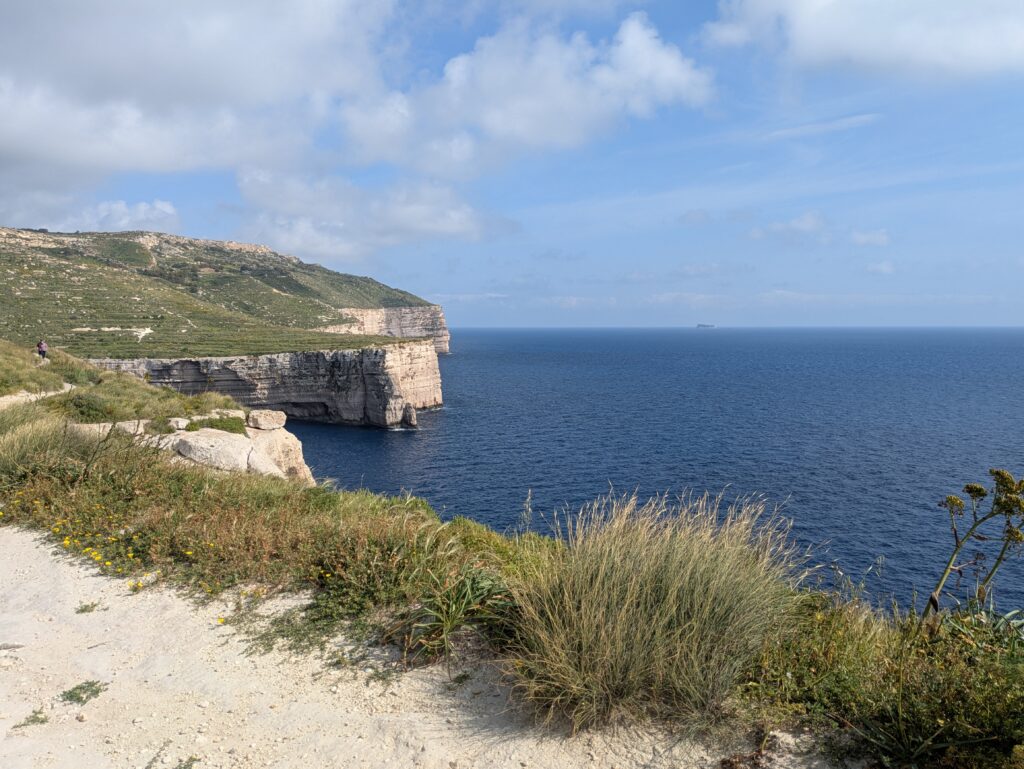
The valleys of Malta are obviously fertile, supporting much market gardening. Above them rise steep, rocky, fallow slopes. These are shaped by ancient agricultural terracing that dates from the Arab conquest of 827-1091 AD. (Since chattel slavery was a significant part of the medieval Muslim economy, I shudder to think these terraces were built and maintained involuntarily.)
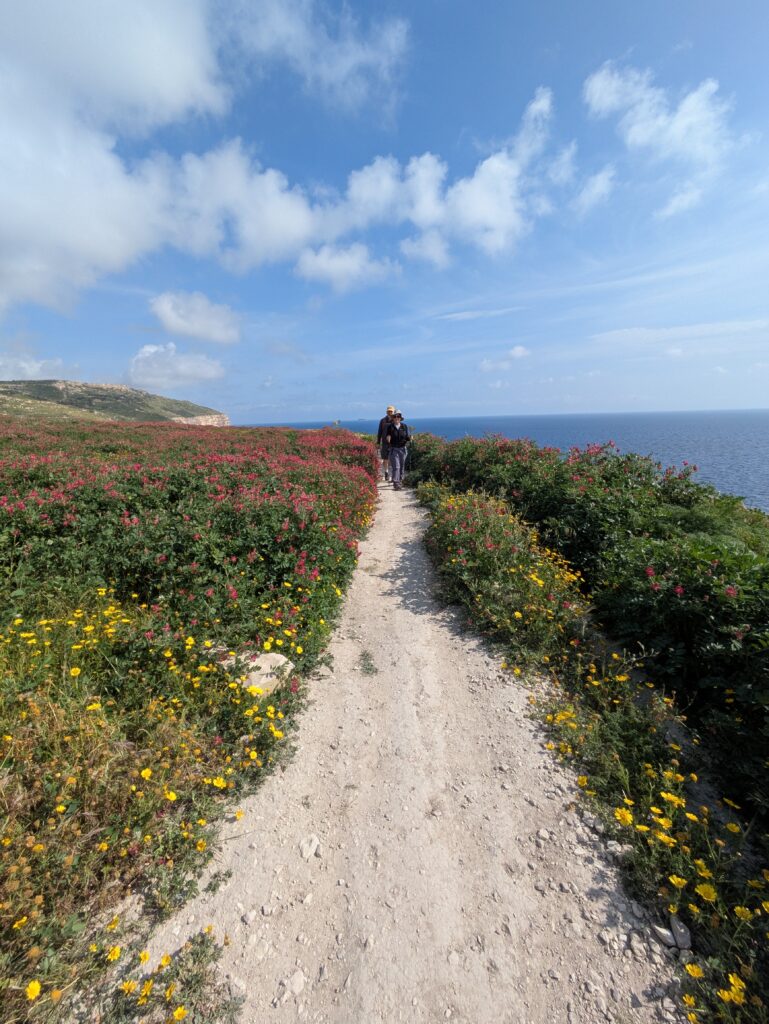
No photos can relate our place in space
I didn’t do much reading about Malta, but I did look at a lot of photos online. I was still ill-prepared for the reality.
Photos never capture our place in space. That’s a multisensory experience, coming from our balance, our eyesight, our hearing, and of course our binocular vision. Even the breeze plays a part.
There’s where plein air painting has the advantage, because it captures the impression of the place, rather than its mere physical details. Perhaps I’ll get a chance to paint before the week is out, but if not, I’m still having a lovely time.
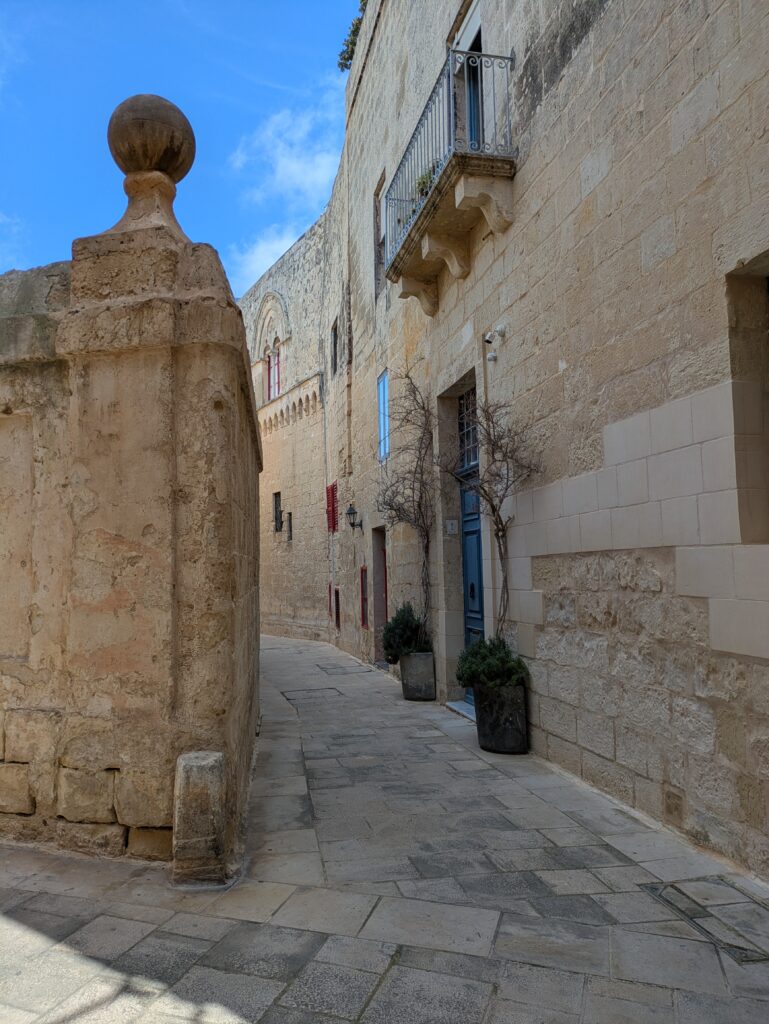
This spring’s painting classes
Zoom Class: Advance your painting skills (whoops, the link was wrong in last week’s posts)
Mondays, 6 PM – 9 PM EST
April 28 to June 9
Advance your skills in oils, watercolor, gouache, acrylics and pastels with guided exercises in design, composition and execution.
This Zoom class not only has tailored instruction, it provides a supportive community where students share work and get positive feedback in an encouraging and collaborative space.
Tuesdays, 6 PM – 9 PM EST
April 29-June 10
This is a combination painting/critique class where students will take deep dives into finding their unique voices as artists, in an encouraging and collaborative space. The goal is to develop a nucleus of work as a springboard for further development.
Reserve your spot now for a workshop in 2025:
- Advanced Plein Air Painting, Rockport, ME, July 7-11, 2025.
- Sea and Sky at Acadia National Park, August 3-8, 2025.
- Find Your Authentic Voice in Plein Air, Berkshires, MA, August 11-15, 2025.
- Immersive In-Person Fall Workshop, Rockport, ME, October 6-10, 2025.
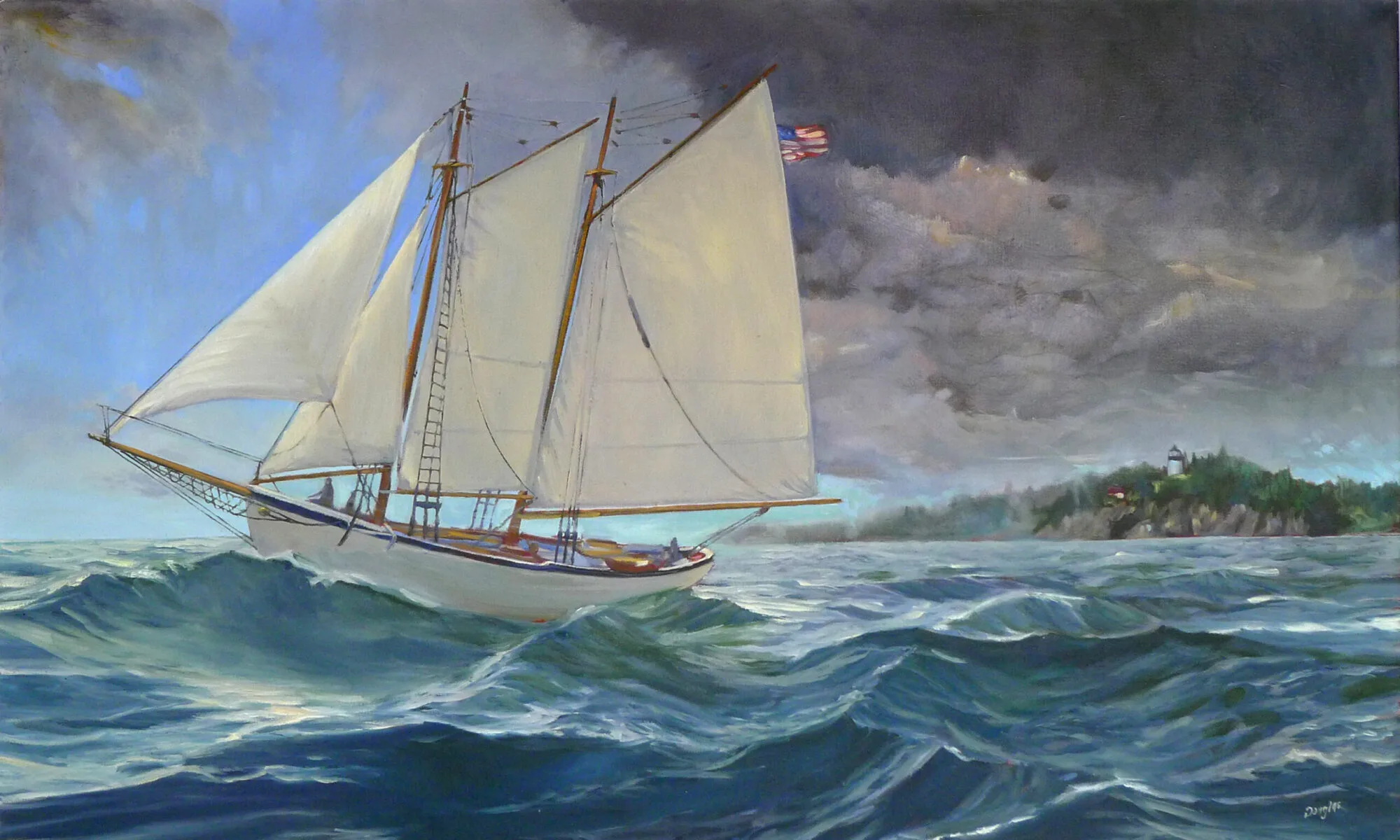
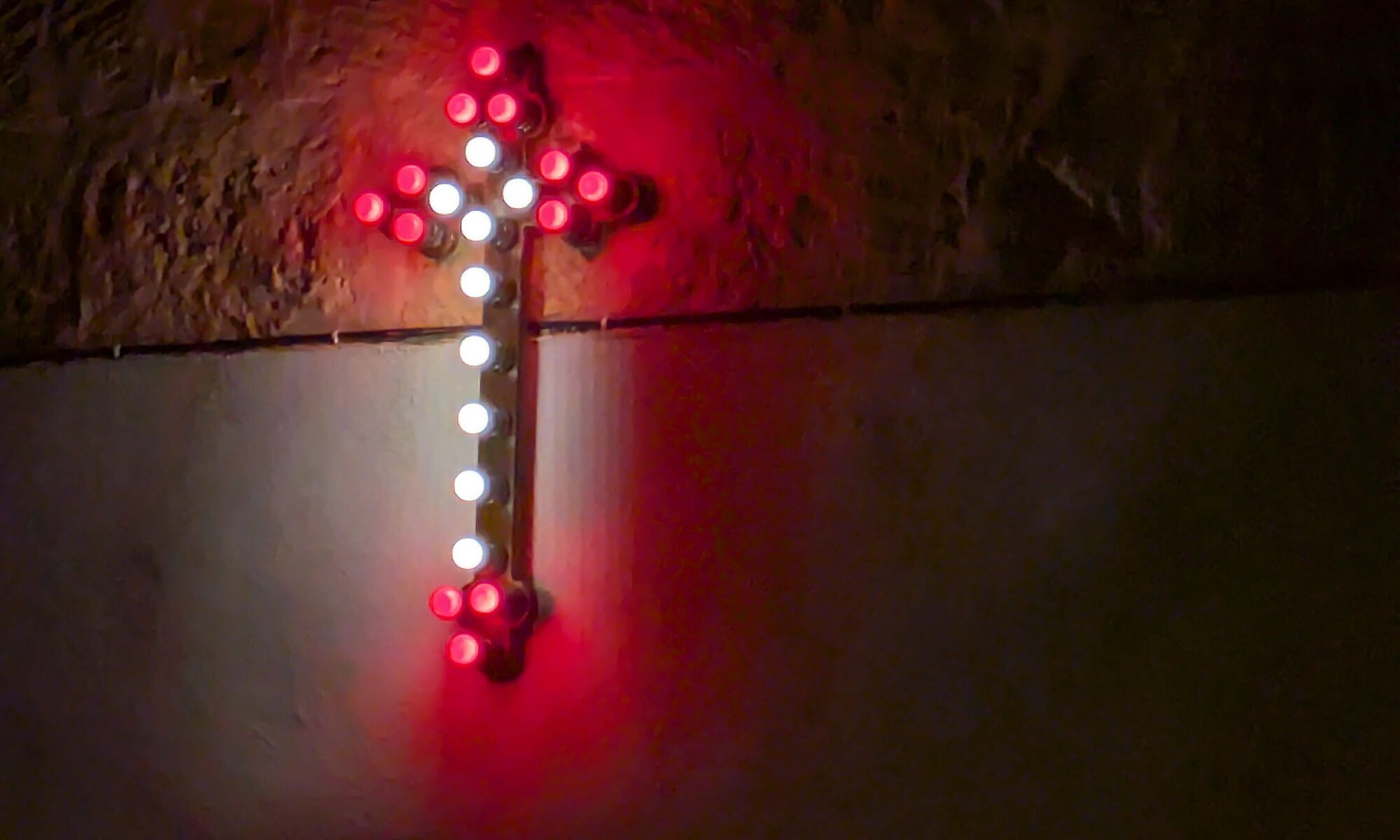
Amazing art and nice description… Thanks for sharing
Looks like an amazing place to visit Carol. I do think that by “photos” if you are referring to travel photos or snapshots taken on smart phones that there is a difference between those and art photos. This is coming from a former art photographer. When I used to print my own images in a darkroom, the experience of bringing out a certain look or feel from my memory and from the limitations of the medium was different than plein air painting but still very much multi-sensory.